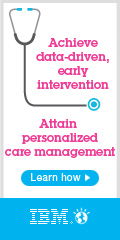
| Archives/Subscribe | Advertise | cmsa.org | cmsa.org | cmsatoday.org | December 2012 |
Today’s Emerging Communication Options Could Be a Game-Changer for Case Managers
Providing the best care for patients is the primary goal of all health care providers, including case managers who may have more contact with a patient than any particular attending physician. In fact, case managers are in the unique position of building relationships with their patients due to the simple fact that they have more opportunities to assess, coordinate, and track their care. And with today’s emerging communication options, such as mobile text messaging and social media, the opportunities to connect are increasing quickly and will literally transform the way medical personnel communicate with their patients. If you look at health care over time, it’s interesting to see how face-to-face meetings and use of phones, faxes, and letters are slowly being replaced with such platforms as text messaging or Facebook updates. This is one of many trends analyzed in a recent survey conducted by the Case Management Society of America (CMSA), the American Board of Quality Assurance and Utilization Review Physicians, Inc. (ABQAURP), and TCS Healthcare Technologies (TCS). The Health Information Technology Survey ("Health IT Survey") assesses how health IT trends are affecting the practice of case management, providing an interesting look at how the trends have shifted since the survey was first conducted in 2008. Nearly gone are the days of providers such as Mayberry’s Dr. George Benson, who made as many house calls as office visits. While face-to-face meetings with patients have been the hallmark of patient relationships for centuries, the Health IT Survey indicates only about 7 out of 10 respondents are communicating with patients this way. When asked about the future of in-person meetings with patients or clients, respondents predict a drop in these types of meetings by about 4-5 percent. Not surprisingly, the use of traditional methods of communication such as letters, telephone, and fax are also on the decline. Of course, the amount of face-to-face meetings and other methods of communication vary from one practice setting to the next, but the overall trend lines are clear. For example, when comparing the results of the 2010 and 2012 Health IT Surveys, use of social networking sites such as Facebook and Twitter. Remote monitoring solutions, blogging sites and text messaging also picking up steam. However, the over-all volume of these emerging communications is much smaller when compared to traditional communication links like the telephone. Clearly, the adoption of some of these new communication options will take some time. In part, concerns exist about privacy, the cost of new technology, and the need for patients to become comfortable with these new ways to stay in touch and report health values. The age of patients also plays a factor. Older patients are not as accustomed to using these types of technology and yet that age group represents the major population for chronic case management. Our society has become increasingly mobile and the health care industry has been forced to react. With the world at their fingertips, patients are becoming e-patients who are no longer willing to sit back idly and wait for a response. The Internet is now a resource for patients to research their symptoms, health concerns, and health care benefits. This paradigm shift to 24/7 accessibility has forced the health community to react and meet the need for available knowledge with increased communication modalities and ways of responding to and informing patients. To Learn More The findings of the 2012 survey will also be published in nine different issue briefs over the next several months. The first issue brief entitled "Communications & Social Media" will be published just after the holidays. Additional issue briefs will focus on Case Management Functions, Transitions of Care/Readmission, Patient Engagement Strategies, IT Infrastructure, Caseloads, Data Analytics/ROI, Satisfaction Trends, and the Adoption Curve. To receive the issue brief series, please click here. To hear a complimentary webinar that discusses the impact of communications and social media on the practice of case management through key findings of the 2012 Health Information Technology Survey, click here. The next complimentary webinar, which will examine additional key findings, is scheduled for February 5, 2013 at 12:00 p.m. ET. Please click here to register.
|
|
| The leading membership association providing professional collaboration across the health care continuum. 6301 Ranch Drive | Little Rock, AR 72223 | Phone: (501) 225-2229 | Toll-Free: (800) 216-2672 | Fax:(501) 221-9608 Secure Fax Line for Credit Cards: (501) 421-2135 | Email: cmsa@cmsa.org | Website: www.cmsa.org |
 Pat Stricker, RN, MEd
Pat Stricker, RN, MEd




